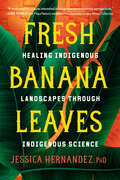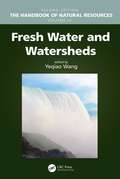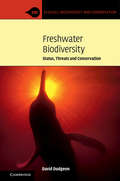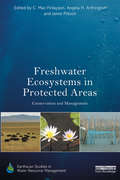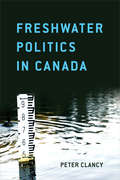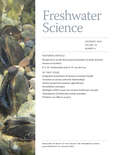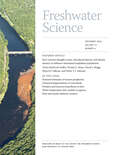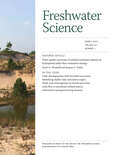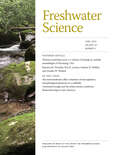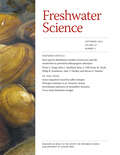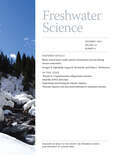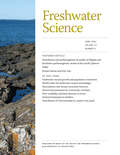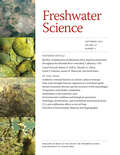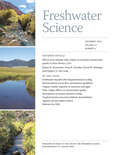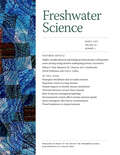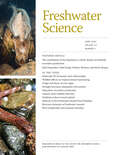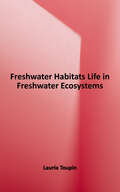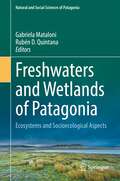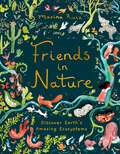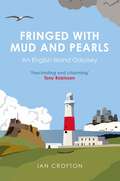- Table View
- List View
Fresh Banana Leaves: Healing Indigenous Landscapes through Indigenous Science
by Jessica HernandezAn Indigenous environmental scientist breaks down why western conservationism isn't working--and offers Indigenous models informed by case studies, personal stories, and family histories that center the voices of Latin American women and land protectors.Despite the undeniable fact that Indigenous communities are among the most affected by climate devastation, Indigenous science is nowhere to be found in mainstream environmental policy or discourse. And while holistic land, water, and forest management practices born from millennia of Indigenous knowledge systems have much to teach all of us, Indigenous science has long been ignored, otherized, or perceived as "soft"--the product of a systematic, centuries-long campaign of racism, colonialism, extractive capitalism, and delegitimization. Here, Jessica Hernandez--Maya Ch'orti' and Zapotec environmental scientist and founder of environmental agency Piña Soul--introduces and contextualizes Indigenous environmental knowledge and proposes a vision of land stewardship that heals rather than displaces, that generates rather than destroys. She breaks down the failures of western-defined conservatism and shares alternatives, citing the restoration work of urban Indigenous people in Seattle; her family's fight against ecoterrorism in Latin America; and holistic land management approaches of Indigenous groups across the continent. Through case studies, historical overviews, and stories that center the voices and lived experiences of Indigenous Latin American women and land protectors, Hernandez makes the case that if we're to recover the health of our planet--for everyone--we need to stop the eco-colonialism ravaging Indigenous lands and restore our relationship with Earth to one of harmony and respect.
Fresh Water and Watersheds
by Yeqiao WangAuthored by world-class scientists and scholars, The Handbook of Natural Resources, Second Edition, is an excellent reference for understanding the consequences of changing natural resources to the degradation of ecological integrity and the sustainability of life. Based on the content of the bestselling and CHOICE-awarded Encyclopedia of Natural Resources, this new edition demonstrates the major challenges that the society is facing for the sustainability of all well-being on the planet Earth. The experience, evidence, methods, and models used in studying natural resources are presented in six stand-alone volumes, arranged along the main systems of land, water, and air. It reviews state-of-the-art knowledge, highlights advances made in different areas, and provides guidance for the appropriate use of remote sensing and geospatial data with field-based measurements in the study of natural resources. Volume 4, Fresh Water and Watersheds, covers fresh water and watersheds, their health and conservation, protection, and management. Organized for ease of reference, it provides fundamental information on groundwater storage, water quality, supply and balance, and water resource vulnerability. New in this edition are discussions on water footprint assessment, water surface dynamics, and water management on a global scale. Understanding the conditions of watersheds is crucial for restoring areas with degraded water quality as well as protecting healthy waters from emerging problems. This volume demonstrates the key processes, methods, and models used through several practical case studies from around the world. Written in an easy-to-reference manner, The Handbook of Natural Resources, Second Edition, as individual volumes or as a complete set, is an essential reading for anyone looking for a deeper understanding of the science and management of natural resources. Public and private libraries, educational and research institutions, scientists, scholars, and resource managers will benefit enormously from this set. Individual volumes and chapters can also be used in a wide variety of both graduate and undergraduate courses in environmental science and natural science at different levels and disciplines, such as biology, geography, earth system science, and ecology.
Freshwater Biodiversity: Status, Threats and Conservation (Ecology, Biodiversity and Conservation)
by David DudgeonGrowing human populations and higher demands for water impose increasing impacts and stresses upon freshwater biodiversity. Their combined effects have made these animals more endangered than their terrestrial and marine counterparts. Overuse and contamination of water, overexploitation and overfishing, introduction of alien species, and alteration of natural flow regimes have led to a 'great thinning' and declines in abundance of freshwater animals, a 'great shrinking' in body size with reductions in large species, and a 'great mixing' whereby the spread of introduced species has tended to homogenize previously dissimilar communities in different parts of the world. Climate change and warming temperatures will alter global water availability, and exacerbate the other threat factors. What conservation action is needed to halt or reverse these trends, and preserve freshwater biodiversity in a rapidly changing world? This book offers the tools and approaches that can be deployed to help conserve freshwater biodiversity.
Freshwater Ecosystems in Protected Areas: Conservation and Management (Earthscan Studies in Water Resource Management)
by Angela H. Arthington Jamie Pittock C. Max FinlaysonFreshwater ecosystems have the greatest species diversity per unit area and many endangered species. This book shows that, rather than being a marginal part of terrestrial protected area management, freshwater conservation is central to sustaining biodiversity. It focuses on better practices for conserving inland aquatic ecosystems in protected areas, including rivers, wetlands, peatlands, other freshwater and brackish ecosystems, and estuaries. The authors define inland aquatic ecosystems, showing just how diverse and widespread they are. They examine the principles and processes that are essential for the conservation of freshwater ecosystems and aquatic species. Major categories of threats to freshwater ecosystems and the flow-on implications for protected area design are described. Practical case studies are used to illustrate principles and practices applied around the world. Specific management needs of the main types of freshwater ecosystems are considered, as well as the management of freshwaters in the broader landscape, showing how natural resource governance processes can be harnessed to better manage freshwater biodiversity. The book offers commentary on how to adapt freshwater conservation practices to climate change and ends with an insightful synthesis.
Freshwater Politics in Canada
by Peter ClancyFreshwater is in great supply across much of Canada. However, competing and changing demands on its use are leading to ever more complex political arrangements. This volume offers an integrated survey of that complexity, combining historical and contemporary cases in a conceptually-informed exploration of water politics. It offers a set of tools, frameworks, and applications that enable readers to recognize and explore the political dimensions of freshwater. The opening chapters introduce core concepts such as power, organized interests, knowledge systems, and the state. They are followed by chapters discussing freshwater subsectors including fisheries, irrigation, flood control, hydropower, and groundwater. A series of topical themes is addressed, including salmon conservation, Aboriginal water interests, hydraulic fracturing, regulatory revisions, and interjurisdictional management. A final section explores emerging trends in freshwater governance. While river catchments are not always the principal denominator in discussions of water politics, they do provide a primary frame of reference for this book. A watershed case study accompanies each chapter. This watershed grounding is intended to encourage readers to turn their attention to local and regional conditions.
Freshwater Science, volume 39 number 4 (December 2020)
by Freshwater ScienceThis is volume 39 issue 4 of Freshwater Science. Freshwater Science (FWS) publishes articles that advance understanding and environmental stewardship of all types of inland aquatic ecosystems (lakes, rivers, streams, reservoirs, subterranean, and estuaries) and ecosystems at the interface between aquatic and terrestrial habitats (wetlands, riparian areas, and floodplains). The journal regularly features papers on a wide range of topics, including physical, chemical, and biological properties of lentic and lotic habitats; ecosystem processes; structure and dynamics of populations, communities, and ecosystems; ecology, systematics, and genetics of freshwater organisms, from bacteria to vertebrates; linkages between freshwater and other ecosystems and between freshwater ecology and other aquatic sciences; bioassessment, conservation, and restoration; environmental management; and new or novel methods for basic or applied research.
Freshwater Science, volume 41 number 4 (December 2022)
by Freshwater ScienceThis is volume 41 issue 4 of Freshwater Science. Freshwater Science (FWS) publishes articles that advance understanding and environmental stewardship of all types of inland aquatic ecosystems (lakes, rivers, streams, reservoirs, subterranean, and estuaries) and ecosystems at the interface between aquatic and terrestrial habitats (wetlands, riparian areas, and floodplains). The journal regularly features papers on a wide range of topics, including physical, chemical, and biological properties of lentic and lotic habitats; ecosystem processes; structure and dynamics of populations, communities, and ecosystems; ecology, systematics, and genetics of freshwater organisms, from bacteria to vertebrates; linkages between freshwater and other ecosystems and between freshwater ecology and other aquatic sciences; bioassessment, conservation, and restoration; environmental management; and new or novel methods for basic or applied research.
Freshwater Science, volume 42 number 1 (March 2023)
by Freshwater ScienceThis is volume 42 issue 1 of Freshwater Science. Freshwater Science (FWS) publishes articles that advance understanding and environmental stewardship of all types of inland aquatic ecosystems (lakes, rivers, streams, reservoirs, subterranean, and estuaries) and ecosystems at the interface between aquatic and terrestrial habitats (wetlands, riparian areas, and floodplains). The journal regularly features papers on a wide range of topics, including physical, chemical, and biological properties of lentic and lotic habitats; ecosystem processes; structure and dynamics of populations, communities, and ecosystems; ecology, systematics, and genetics of freshwater organisms, from bacteria to vertebrates; linkages between freshwater and other ecosystems and between freshwater ecology and other aquatic sciences; bioassessment, conservation, and restoration; environmental management; and new or novel methods for basic or applied research.
Freshwater Science, volume 42 number 2 (June 2023)
by Freshwater ScienceThis is volume 42 issue 2 of Freshwater Science. Freshwater Science (FWS) publishes articles that advance understanding and environmental stewardship of all types of inland aquatic ecosystems (lakes, rivers, streams, reservoirs, subterranean, and estuaries) and ecosystems at the interface between aquatic and terrestrial habitats (wetlands, riparian areas, and floodplains). The journal regularly features papers on a wide range of topics, including physical, chemical, and biological properties of lentic and lotic habitats; ecosystem processes; structure and dynamics of populations, communities, and ecosystems; ecology, systematics, and genetics of freshwater organisms, from bacteria to vertebrates; linkages between freshwater and other ecosystems and between freshwater ecology and other aquatic sciences; bioassessment, conservation, and restoration; environmental management; and new or novel methods for basic or applied research.
Freshwater Science, volume 42 number 3 (September 2023)
by Freshwater ScienceThis is volume 42 issue 3 of Freshwater Science. Freshwater Science (FWS) publishes articles that advance understanding and environmental stewardship of all types of inland aquatic ecosystems (lakes, rivers, streams, reservoirs, subterranean, and estuaries) and ecosystems at the interface between aquatic and terrestrial habitats (wetlands, riparian areas, and floodplains). The journal regularly features papers on a wide range of topics, including physical, chemical, and biological properties of lentic and lotic habitats; ecosystem processes; structure and dynamics of populations, communities, and ecosystems; ecology, systematics, and genetics of freshwater organisms, from bacteria to vertebrates; linkages between freshwater and other ecosystems and between freshwater ecology and other aquatic sciences; bioassessment, conservation, and restoration; environmental management; and new or novel methods for basic or applied research.
Freshwater Science, volume 42 number 4 (December 2023)
by Freshwater ScienceThis is volume 42 issue 4 of Freshwater Science. Freshwater Science (FWS) publishes articles that advance understanding and environmental stewardship of all types of inland aquatic ecosystems (lakes, rivers, streams, reservoirs, subterranean, and estuaries) and ecosystems at the interface between aquatic and terrestrial habitats (wetlands, riparian areas, and floodplains). The journal regularly features papers on a wide range of topics, including physical, chemical, and biological properties of lentic and lotic habitats; ecosystem processes; structure and dynamics of populations, communities, and ecosystems; ecology, systematics, and genetics of freshwater organisms, from bacteria to vertebrates; linkages between freshwater and other ecosystems and between freshwater ecology and other aquatic sciences; bioassessment, conservation, and restoration; environmental management; and new or novel methods for basic or applied research.
Freshwater Science, volume 43 number 1 (March 2024)
by Freshwater ScienceThis is volume 43 issue 1 of Freshwater Science. Freshwater Science (FWS) publishes articles that advance understanding and environmental stewardship of all types of inland aquatic ecosystems (lakes, rivers, streams, reservoirs, subterranean, and estuaries) and ecosystems at the interface between aquatic and terrestrial habitats (wetlands, riparian areas, and floodplains). The journal regularly features papers on a wide range of topics, including physical, chemical, and biological properties of lentic and lotic habitats; ecosystem processes; structure and dynamics of populations, communities, and ecosystems; ecology, systematics, and genetics of freshwater organisms, from bacteria to vertebrates; linkages between freshwater and other ecosystems and between freshwater ecology and other aquatic sciences; bioassessment, conservation, and restoration; environmental management; and new or novel methods for basic or applied research.
Freshwater Science, volume 43 number 2 (June 2024)
by Freshwater ScienceThis is volume 43 issue 2 of Freshwater Science. Freshwater Science (FWS) publishes articles that advance understanding and environmental stewardship of all types of inland aquatic ecosystems (lakes, rivers, streams, reservoirs, subterranean, and estuaries) and ecosystems at the interface between aquatic and terrestrial habitats (wetlands, riparian areas, and floodplains). The journal regularly features papers on a wide range of topics, including physical, chemical, and biological properties of lentic and lotic habitats; ecosystem processes; structure and dynamics of populations, communities, and ecosystems; ecology, systematics, and genetics of freshwater organisms, from bacteria to vertebrates; linkages between freshwater and other ecosystems and between freshwater ecology and other aquatic sciences; bioassessment, conservation, and restoration; environmental management; and new or novel methods for basic or applied research.
Freshwater Science, volume 43 number 3 (September 2024)
by Freshwater ScienceThis is volume 43 issue 3 of Freshwater Science. Freshwater Science (FWS) publishes articles that advance understanding and environmental stewardship of all types of inland aquatic ecosystems (lakes, rivers, streams, reservoirs, subterranean, and estuaries) and ecosystems at the interface between aquatic and terrestrial habitats (wetlands, riparian areas, and floodplains). The journal regularly features papers on a wide range of topics, including physical, chemical, and biological properties of lentic and lotic habitats; ecosystem processes; structure and dynamics of populations, communities, and ecosystems; ecology, systematics, and genetics of freshwater organisms, from bacteria to vertebrates; linkages between freshwater and other ecosystems and between freshwater ecology and other aquatic sciences; bioassessment, conservation, and restoration; environmental management; and new or novel methods for basic or applied research.
Freshwater Science, volume 43 number 4 (December 2024)
by Freshwater ScienceThis is volume 43 issue 4 of Freshwater Science. Freshwater Science (FWS) publishes articles that advance understanding and environmental stewardship of all types of inland aquatic ecosystems (lakes, rivers, streams, reservoirs, subterranean, and estuaries) and ecosystems at the interface between aquatic and terrestrial habitats (wetlands, riparian areas, and floodplains). The journal regularly features papers on a wide range of topics, including physical, chemical, and biological properties of lentic and lotic habitats; ecosystem processes; structure and dynamics of populations, communities, and ecosystems; ecology, systematics, and genetics of freshwater organisms, from bacteria to vertebrates; linkages between freshwater and other ecosystems and between freshwater ecology and other aquatic sciences; bioassessment, conservation, and restoration; environmental management; and new or novel methods for basic or applied research.
Freshwater Science, volume 44 number 1 (March 2025)
by Freshwater ScienceThis is volume 44 issue 1 of Freshwater Science. Freshwater Science (FWS) publishes articles that advance understanding and environmental stewardship of all types of inland aquatic ecosystems (lakes, rivers, streams, reservoirs, subterranean, and estuaries) and ecosystems at the interface between aquatic and terrestrial habitats (wetlands, riparian areas, and floodplains). The journal regularly features papers on a wide range of topics, including physical, chemical, and biological properties of lentic and lotic habitats; ecosystem processes; structure and dynamics of populations, communities, and ecosystems; ecology, systematics, and genetics of freshwater organisms, from bacteria to vertebrates; linkages between freshwater and other ecosystems and between freshwater ecology and other aquatic sciences; bioassessment, conservation, and restoration; environmental management; and new or novel methods for basic or applied research.
Freshwater Science, volume 44 number 2 (June 2025)
by Freshwater ScienceThis is volume 44 issue 2 of Freshwater Science. Freshwater Science (FWS) publishes articles that advance understanding and environmental stewardship of all types of inland aquatic ecosystems (lakes, rivers, streams, reservoirs, subterranean, and estuaries) and ecosystems at the interface between aquatic and terrestrial habitats (wetlands, riparian areas, and floodplains). The journal regularly features papers on a wide range of topics, including physical, chemical, and biological properties of lentic and lotic habitats; ecosystem processes; structure and dynamics of populations, communities, and ecosystems; ecology, systematics, and genetics of freshwater organisms, from bacteria to vertebrates; linkages between freshwater and other ecosystems and between freshwater ecology and other aquatic sciences; bioassessment, conservation, and restoration; environmental management; and new or novel methods for basic or applied research.
Freshwater habitats : life in freshwater ecosystems
by Laurie ToupinA look at the plants, animals, locations, and various habitats that make up the freshwater ecosystems of the world.
Freshwaters and Wetlands of Patagonia: Ecosystems and Socioecological Aspects (Natural and Social Sciences of Patagonia)
by Gabriela Mataloni Rubén D. QuintanaThe Freshwaters of Patagonia adopts a socioecological approach, in which experts from across Patagonia review recent, scientifically rigorous literature and data of their own, thus synthesizing the current knowledge directly relevant to understand the present state and future trends of icefields, freshwater and wetland ecosystems in this region.The book’s organization into three parts provides a studied and comprehensive view on the patterns and processes of the various ecosystems in Patagonia, and describes the sociological aspects of freshwater ecosystems, as well as characterizes the conservation of the freshwater and wetland ecosystems, in Patagonia. The chapters offer a broad, state-of-the-art overview of the current status of glaciers, freshwater and wetland ecosystems of this region, as well as studies of both local and large scale biodiversity patterns, and study cases of extreme and naturally polluted environments.The volume concludes with the current status of Patagonian freshwaters, and discusses the scientific, legal and administrative tools aimed at their sustainable management within the framework of the UNEP Sustainable Development Goals 2030 Agenda. A broad audience of students, scientists, engineers, environmental managers, and policy makers will be interested in this volume.
Frieden in politischem Unsettlement: Jenseits von Konfliktlösung
by Jan PospisilDie internationale Friedensförderung ist in eine Sackgasse geraten. Ihre hochgesteckten Ziele haben bestenfalls zu einem mittelmäßigen Erfolg geführt, der von Momenten des völligen Scheiterns unterbrochen wurde. Die Diskreditierung des Begriffs "liberale Friedenskonsolidierung" hat dazu geführt, dass er sich weiterentwickelt hat, um auf die zahlreichen Kritiken zu reagieren. Begriffe wie "inklusiver Frieden" verbinden das liberale Paradigma mit kritischen Begriffen des Kontexts und der Notwendigkeit, Praktiken zu verfeinern, um "das Lokale" oder "Komplexität" zu berücksichtigen. Es ist jedoch unklar, wie sich dies in klare Leitlinien für die Praxis der Friedensförderung umsetzen lässt. Paradoxerweise hat die gegenwärtige Politik der Friedenskonsolidierung ein noch nie dagewesenes Maß an Vagheit erreicht. Frieden in der politischen Unruhe bietet eine alternative Antwort, die in einem neuen Diskurs verwurzelt ist, der darauf abzielt, sowohl auf die Erfahrungen der Arbeit in Friedensprozessen einzugehen. Es zeichnet ein neues Verständnis von Friedensprozessen als Institutionalisierung formalisierter politischer Unruhe und zeigt neue Wege auf, damit umzugehen. Das Buch zeigt auf, wie Friedensprozesse Formen der Uneinigkeit institutionalisieren und fortlaufende Prozesse schaffen, um sie zu bewältigen, anstatt sie zu lösen. Es schlägt einen bescheidenen Ansatz vor, um "Aufhänger" für künftige Prozesse zu schaffen und den Einsatz kreativer Nicht-Lösungen und Praktiken der Uneinigkeit zu maximieren, die als Wege für pragmatische Nachkriegsübergänge diskutiert werden. Nur wenn wir die Natur und die Techniken der formalisierten politischen Unruhe verstehen, können wir neue konstruktive Wege finden, mit ihr umzugehen.
Friends Not Food: The Little Book of Vegan Wisdom
by AnonymousChickens, Cows, Ducks, Sheep, Pigs, Rabbits, Trout, Salmon, Prawns, Lobsters - all of the animal kingdom - are not here for us to eat, we should be looking after them.Friends Not Food is a celebration of our relationship with our animal friends and is packed with vegan sayings as well as facts about both those animals and the industries that prey on them.The perfect gift for anyone who loves animals!And whilst you #StayHome, don't miss these other great titles from Sphere Books: ** Distract Yourself: 101 Positive Things to Do and Learn Whilst You Stay Home ** ** The Bumper Book of Would You Rather? Over 350 hilarious hypothetical questions for ages 6 to 106 **** Home Sweet Home: The Little Book of Natural Cleaning **** Shelf Respect: A Book Lovers' Guide to Curating Book Shelves at Home **
Friends Not Food: The Little Book of Vegan Wisdom
by AnonymousChickens, Cows, Ducks, Sheep, Pigs, Rabbits, Trout, Salmon, Prawns, Lobsters - all of the animal kingdom - are not here for us to eat, we should be looking after them.Friends Not Food is a celebration of our relationship with our animal friends and is packed with vegan sayings as well as facts about both those animals and the industries that prey on them.The perfect gift for anyone who loves animals!And whilst you #StayHome, don't miss these other great titles from Sphere Books: ** Distract Yourself: 101 Positive Things to Do and Learn Whilst You Stay Home **** The Bumper Book of Would You Rather? Over 350 hilarious hypothetical questions for ages 6 to 106 **** Home Sweet Home: The Little Book of Natural Cleaning **** Shelf Respect: A Book Lovers' Guide to Curating Book Shelves at Home **
Friends in Nature: Discover Earth's Amazing Ecosystems
by Marina RuizDiscover the incredible ways in which animals and plants help each other, the planet and YOU to thrive with this illustrated tale of symbiosis and ecology for children aged 5-7.Can you imagine a world where you had to do everything by yourself? It's pretty impossible. The truth is, everyone needs a little help from someone, or something.All living things in the natural world - from the trees and the bees to the dogs and the frogs - depend on one another. There wouldn't be a coral reef without the help of all the fish that have made it their home. Rainforests are only filled with lush and colourful plants because of the birds and mammals who eat and scatter their seeds. Acacia trees have a whole army of ants to protect them, while elephants rely on egrets to keep them parasite-free. And it's because of bees, wasps and butterflies that we have tasty fruit and vegetables to eat.Created by writer and artist Marina Ruiz, beautifully illustrated scenes reveal the wonderful connections and cooperation in nature. Narrative storytelling links every spread to the next, exploring how even the tiniest relationship has a big impact in keeping our planet's huge and complex web balanced.
Friends of the Earth: A History of American Environmentalism with 21 Activities (For Kids series #42)
by Pat MccarthyThe history of American environmentalism is the history of men and women who dedicated their lives to protecting the nation's natural heritage. Almost singlehandedly, John James Audubon introduced the study of birds in North America. John Muir pushed a president and a nation into setting aside vast preserves, including Yosemite, Sequoia, Mt. Rainier, and the Grand Canyon. Marjory Stoneman Douglas did the same for the Florida Everglades, as did Mardy Murie with the Grand Tetons and the Arctic National Wildlife Refuge. Cordelia Stanwood, and later Roger Peterson, revolutionized and popularized birdwatching. Rachel Carson opened the world's eyes to the dangers of pesticides, and Julia "Butterfly" Hill saved a 1,000-year-old redwood while bringing to light the devastation of our old growth forests. Together, these environmentalists' inspiring life stories tell the story of American environmentalism, from its inception to the present day. In Friends of Our Earth readers will also learn how to put their concerns into action. Author Pat McCarthy gives step-by-step instructions on how to build a birdfeeder, conduct a water quality survey, start a compost pile, study the Greenhouse Effect, make plaster casts of animals tracks, create their own recycled paper, test for acid rain, and more. It includes a time line of historic milestones, popular outdoor parks and sites to visit or explore online, and Web resources for further study.
Fringed With Mud and Pearls: An English Island Odyssey
by Ian CroftonScotland has its rugged Hebrides; Ireland its cliff-girt Arans; Wales its Island of Twenty Thousand Saints. And what has England got? The isles of Canvey, Sheppey, Wight and Dogs, Mersea, Brownsea, Foulness and Rat. But there are also wilder, rockier places – Lundy, the Scillies, the Farnes. These islands and their inhabitants not only cast varied lights on the mainland, they also possess their own peculiar stories, from the Barbary slavers who once occupied Lundy, to the ex-major who seized a wartime fort in the North Sea and declared himself Prince of Sealand. Ian Crofton embarks on a personal odyssey to a number of the islands encircling England, exploring how some were places of refuge or holiness, while others have been turned into personal fiefdoms by their owners, or become locations for prisons, rubbish dumps and military installations. He also describes the varied ways in which England's islands have been formed, and how they are constantly changing, so making a mockery of human claims to sovereignty.
